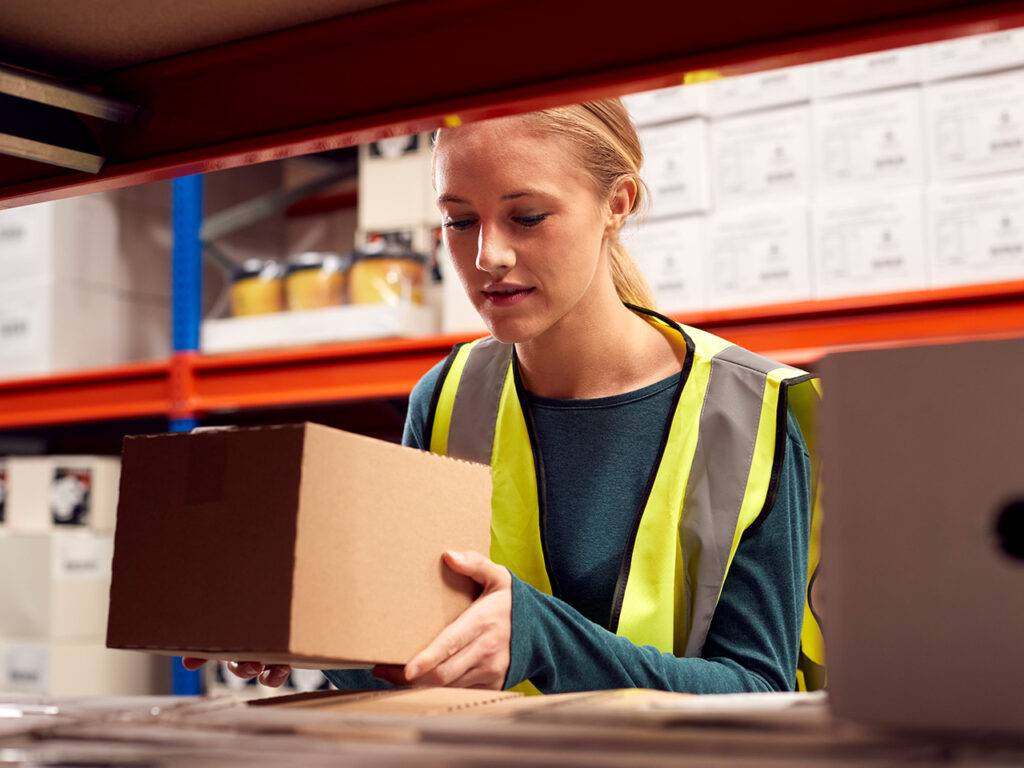
picking and packing
In Australia, pick-and-pack services are the backbone of the eCommerce industry. The accuracy in these operations is what’s crucial, as mistakes can lead to customer dissatisfaction and costly product replacements.
Without a doubt, picking and packing is labour-intensive work, but that doesn’t mean there are no smart approaches. Here are 6 of the smartest ways to hike your productivity with pick-and-pack services.
Read, learn, and enjoy the output!
1. Customise the Packing Slip
Customisation makes one feel different and is not limited to a few categories. You can customise anything you want, including pick-and-pack services.
One way to do it is by writing the packer’s first name and including their personal photograph on the packing slip enclosed in each shipment. Even though a photo isn’t necessary for tracking the packer, this customisation technique has a profound psychological impact on the carrier.
More than their name, including a photograph, makes the packer feel more responsible for their actions. This sense of responsibility is much needed when delegating an important task such as shipment.
2. Grouping the Orders
Grouping orders means putting together different orders into one packaging. It’s usually opted when several orders need similar packing. This can save you extra work and money. You may also consult your packer’s opinions and do what you feel is best for your business.
However, remember that the key to grouping is to find orders with similar packing needs.
3. Keeping the Packing Stations Stocked and Organised
Generally, warehouses and storage places generally have individual, designated stations for every process in order fulfilment. For example, you may notice separate workstations for product assembling, packaging, and labelling. This method is widely adopted to make the process more time efficient.
Thus, you need to make sure that the packing stations have everything the packers need to accomplish their jobs, including supplies. Get their opinions on the tools used to see which ones function effectively and which cause them to struggle with the operation.
Further, you must also make the packing stations accessible to the workers by organising them. It reduces the foot traffic as packers’ walking and reaching is kept to a minimum.
4. Find Your Optimum Picking Strategy
There are several picking techniques, including zone, wave, cluster, batch, and piece picking. You must comprehend each approach and select one or more that work best for your online store.
Some common approaches are as below.
- Piece Picking: This is best for small businesses. In this approach, you must complete one order at a time. You take the slip for a single order, search your storage racks, and select the necessary goods. Then, you take all the gathered products to the packing station, where the order packaging team will take care of them.
- Batch Picking: To implement this approach, you should get enough orders to split them into batches. It saves time by eliminating the need for a back-and-forth between shelves and packing stations for individual orders, and it also enables your pickers to optimise their picking path.
- Zone Picking: In this technique, pickers only select the things in their designated warehouse zones. If a product in the order belongs to a different zone, they transfer the slip to the relevant zone picker. Businesses with vast warehouses and a high number of daily orders benefit from the zone-picking process.
These are three popular picking methods employed by pick-and-pack services in Australia. Apart from these, there are several more— wave picking, cluster picking, and so on.
5. Carry ABC Analysis
The general rule is that 20% of your product range will account for 80% of your sales. It’s often known as the 80/20 rule. Based on this notion, ABC analysis helps you improve your warehouse operations. It sorts your inventory into three categories.
- A: While this group only accounts for 10–20% of the entire inventory, it contributes around 70–80% of your bottom line. Ideally, you should maintain your top-selling items in this category. Keeping these goods close to the packing station.
- B: It makes up about 30% of the inventory count, but its worth is only 15% to 20% of the total. Since you don’t sell these things as frequently, you may put them a little farther from the packing stations in the warehouse.
- C: These are the least popular goods, making up around 50% of the available stock but only contributing 5% to overall sales. Sometimes, the expense of storing them may even exceed their real value. Thus, they may lie at the furthest corner of your warehouse.
6. Consider Cross-Docking
Cross-docking is when you unload your incoming merchandise and reload it directly into the outgoing cargo trucks.
This strategy is more appropriate for B2B eCommerce, where you sell things in bulk, since it calls for synchronising the time of the incoming and outgoing inventory movement. Therefore, it can aid in the speedy turnaround of your items while helping you avoid paying storage fees.
Cross-docking makes more sense for huge e-retailers when they split up the incoming inventory across their many fulfilment facilities.
Conclusion
We hope you will try these 6 methods to improve your pick and pack fulfilment. If you are handling these in-store, you will benefit by keeping these points in mind. However, in some cases, outsourcing is a better and more viable option.
If it makes sense to you to outsource your pick and pack services, here’s our favourite recommendation: Efficient Services Group.
With a broad range of experience, Efficient Group can handle everything from kitting services to fashion warehousing and distribution. Give them a chance!



